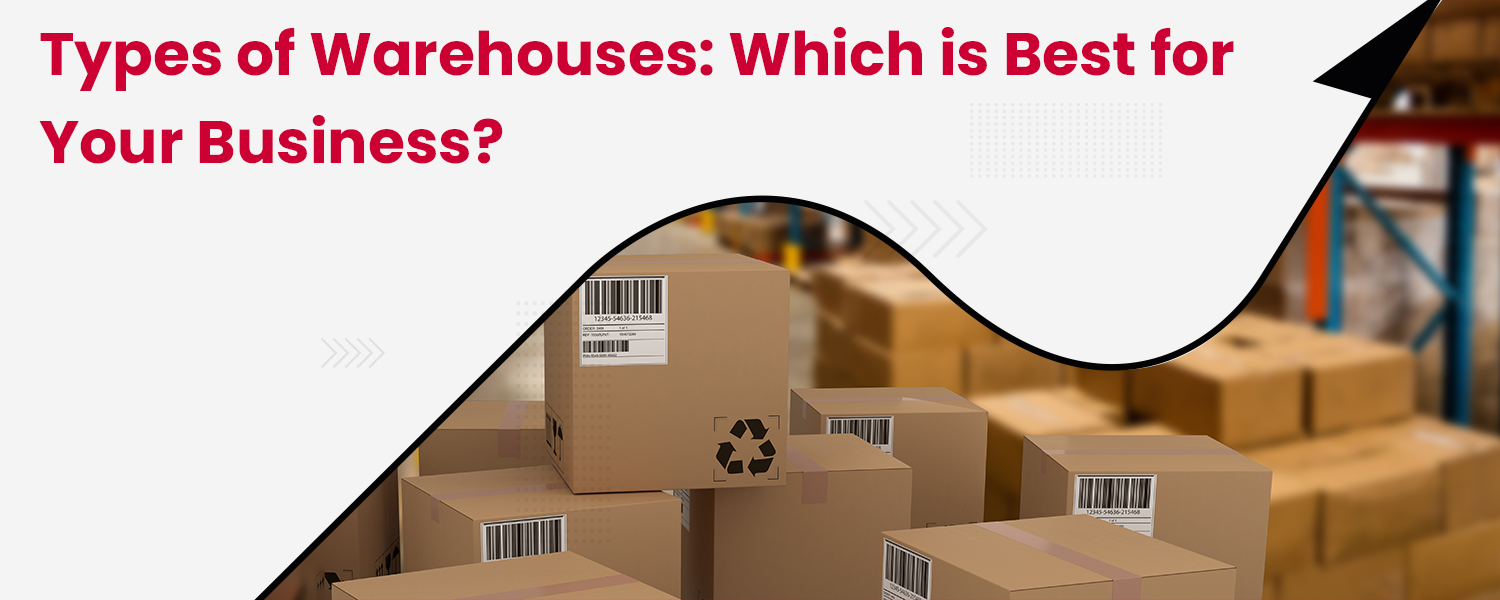Looking for warehouses to store goods for your ecommerce business? You’ve landed at the right place. But, before getting down to the types of warehouses, let’s get a better understanding of what warehousing means at the business level. In simple terms, warehouses help sellers stock goods until they are sold to the customers. Some ecommerce sellers purchase the space for storing the goods; however, most of the sellers opt for third-party warehouses to save on warehousing expenses.
Follow this blog until the very end to understand all types of warehouses’ meanings and their importance in shipping and logistics.
What Is A Warehouse
If we are to define a warehouse, they can be typically called massive storage spaces which are meant for stockpiling goods and commodities over a long period until they are dispatched for delivery to end customers or businesses. They are well-maintained for systematically holding goods so that they can be easily located at the time of delivery for picking, packing and labelling.
Warehouses in logistics play a significant role in facilitating the entire transportation and distribution of goods via well-established supply chains. They help e-commerce and retail businesses maintain the stocks of commodities regularly so that they can be delivered promptly to customers located in distant locations.
Types of Warehousing in Logistics
There are different warehousing types in shipping and logistics which serve different purposes as per the needs of diverse businesses. Some are given below:
Private Warehouse
Private warehouses are owned and maintained by manufacturers/traders and resellers. These kinds of warehouses are available for their distribution activities exclusively.
Examples of Private Warehouse:
- Warehouses that farmers construct near their fields.
- Warehouses that manufacturers construct close to their production unit.
- Warehouses owned and managed by wholesalers and retailers near their selling centres.
- Warehouses that retail stores purchase on rent.
- Different warehouses of retailers in different regions to cater to the market needs.
- Warehouses that a wholesaler owns/leases for storage and distribution of goods. Maintaining such warehouses includes fixed, as well as variable expenses. Fixed costs generally involve the insurance amount, taxes, capital, and interests. On the other hand, variable costs may include operational and maintenance expenses.
Public Warehouse
As the name suggests, public warehouses are owned by the government and semi-government bodies. Private firms can use these warehouses to store goods on rent. The main motive behind setting up public warehouses is to help small traders who aren’t financially prepared to purchase independent warehouses for inventory storage.
Central/state governments come forward to cater to the storage needs of retailers and traders to encourage upcoming businesses in the industry.
Anyone can use these storage facilities to fulfil the distribution needs of their business. Besides budding retailers/traders, even well-established retailers may utilize these facilities in case they have insufficient space in their private warehouses due to any reason. For instance, retailers may want to stock extra products to evade out-of-stock situations during festive sales or holiday seasons. Typically regulated by government bodies, these warehouses are mainly used by manufacturers, exporters, and importers.
Bonded Warehouse
Owned, managed, and controlled by the government along with private agencies, bonded warehouses are used for the storage of imported goods for which import duty is yet to be paid. Private agencies need to obtain a license from the government to run such warehouses independently.
Bonded warehouses are subject to excise duty and customs duty. Importers can’t take or open these goods without paying duties. Therefore, by using these facilities government gets to hold control of private firms to pay their taxes in a timely.
Co-operative Warehouse
These types of warehouses are owned, managed, and controlled by cooperative societies. Instead of earning a profit, these warehouses are focused on helping society members. Only cooperative society members can avail of these warehouse facilities for storage of goods at economical rates.
Distribution Centre
Distribution centres are built in large spaces. These facilities enable fast movement of goods in large quantities for a short duration in contrast to the traditional warehouses where you can store goods for as long as two months or even a year.
As the name suggests, these warehouses serve as distribution points where goods are procured from different suppliers to deliver to customers in nearby locations. These distribution centres mainly focus on moving goods in the quickest, fastest, and most reliable manner.
Usually, these facilities are close to the transportation centres to minimize the delivery duration of procured goods. In the case of perishable products or food items, the distribution centres handle the goods even for less than 24 hours to maintain the quality of the order. In most cases, products received during the early morning are distributed by the evening.
Warehousing in logistics independently can be a huge expense for most businesses. To deliver the products timely, sellers usually need to store inventory in different locations near their customers.
However, purchasing warehouses in different locations can surge the logistics expense of a seller by a huge percentage. On the contrary, storing the inventory in shared warehouses can help sellers cut down the logistics expenditure by almost half. So, before purchasing a warehouse, get an understanding of different order fulfilment stages and prepare an estimate for logistics operations.
NimbusPost offers worldwide fulfilment services with its warehouses in several domestic and international locations to make logistics a cost-effective process for ecommerce sellers. Sign up to India’s most trusted logistics platform for free and experience the most streamlined fulfilment process for your online business.




